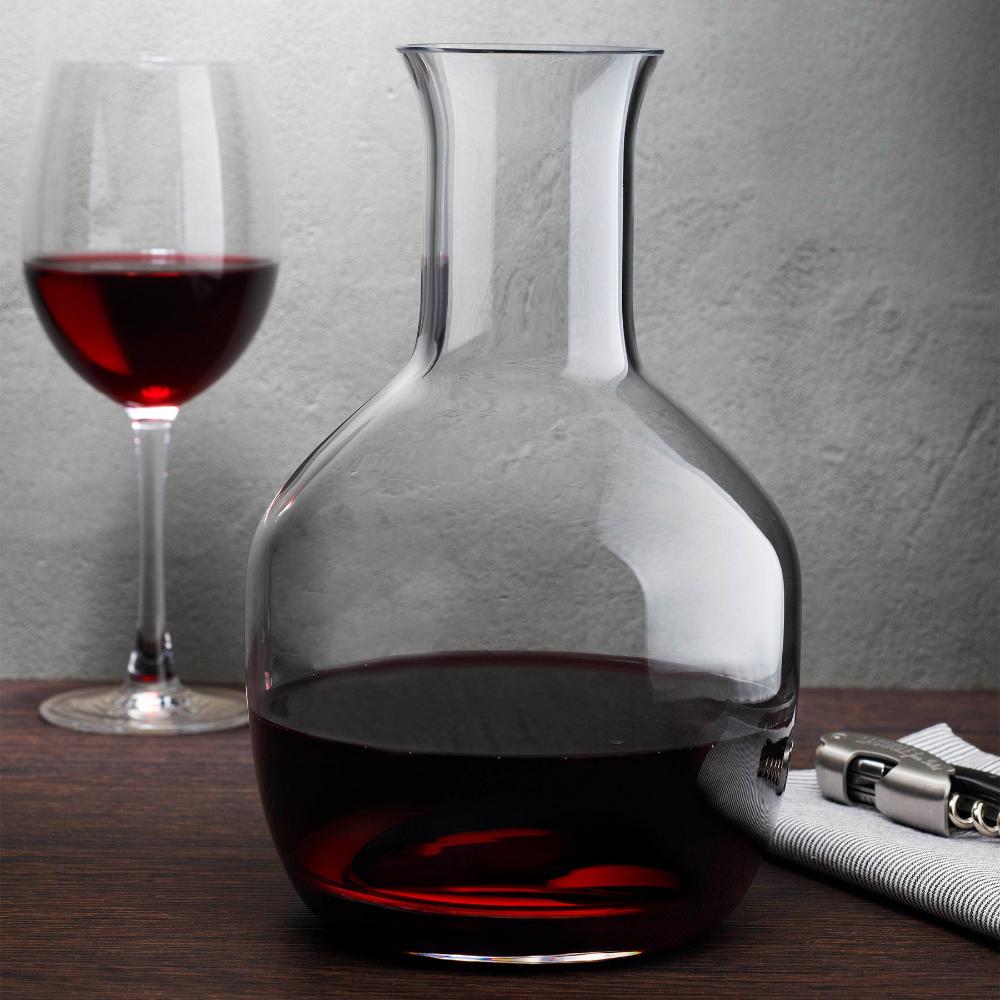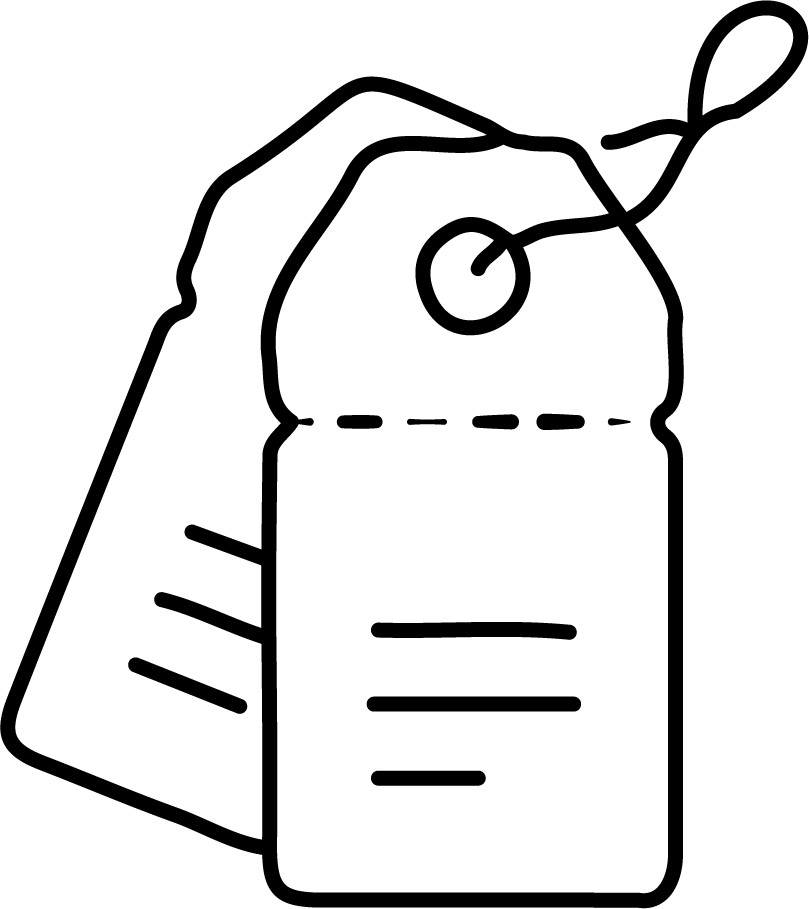
So you know your wine. You might not be the one that insists on ordering for the whole table, but you could if you absolutely had to. You probably have a half dozen bottles in your house, but not in a cellar. Wine cellars are for fancy wine drinkers. Oenophiles or sommeliers, right? Maybe. You’ve heard of decanters from your friends but aren’t totally sure what they are or what they do. You’ve seen their unique, and sometimes ridiculous, shapes and may have asked yourself, “is that really necessary?” Well that’s why we are here today. To discuss decanters. All things you need to know, and all things not so much.
If you don’t know what a decanter is, no worries. It's pretty simple. A decanter serves one of two basic purposes. To expand the wine’s surface area to expose it to oxygen for myriad reasons. Or to have a clear container to pour the bottle in, so you know when to stop pouring, if the wine has any sediment. Sorry to remove all the mystery, but it’s kinda that simple.
So you might be thinking that you could expand the wine’s surface area and expose it to the oxygen in the air with a large salad bowl, right? And perhaps you could catch all the sediment that might have formed in the bottle with a coffee filter or cheesecloth. Well you would be correct. Technically you could have done those two things, served your wine in your underwear and enjoyed your vino in sippy cups whilst sitting on milk crates. You get the point. You just wouldn’t do that.
So there are equal parts form and function in the decanting process. Part of the beauty of enjoying wine is in the gracefulness of the presentation. The theatre of the moment. So you might not present the cork to everyone in the room for them to sniff but at least do your best to respect the moment. The wine in that bottle has not taken a breath in years, maybe decades. Show this metamorphic moment some respect. Hence…the decanter.
A couple things to consider when using a decanter. Sit your wine bottles upright for 24 hours before serving. Especially older ones. This allows for sediment, also known as wine diamonds, to settle to the bottom of the bottle. Let’s get this out of the way. The only downside to sediments is texture. They are basically tartrate crystals or spent yeast that are totally natural in the aging process. They are perfectly fine. But most people don’t like them so we come up with processes to mitigate them. Some people like sediment. Some people like gristle in their bone-in filet mignon too.
When you start to pour the wine into the decanter, keep the angle of the bottle pretty slight and the pour slow. You don’t want to expedite the evaporation or oxidation process. And you certainly don’t want to disturb the sediment that has hopefully settled at the bottom of the bottle. If you’ve managed to control your pour well, leave a small amount of wine in the bottle to avoid any sediment escaping (maybe a quarter inch). After you’ve emptied the entire bottle (except the quarter inch) into the decanter, simply let the wine sit in the decanter and wait for the magic to happen. Half your job is done. Thirty minutes for a lighter bodied red like a pinot noir and sixty minutes for medium bodied reds like a merlot or cab. If your wine starts to smell like vinegar you’ve waited too long. So drink fast before anyone notices. Oh, we should have noted, most purists will tell you not to decant white wines or sparkling wines. It’s not the worst thing you can do, but other than the oohs and ahhs of the presentation, it doesn’t do much. So you can, but you probably shouldn’t. Your credibility might drop a few drops.
Assuming you have waited the perfect amount of time for your red wine to decant, just grab your favorite glass (we have a few thoughts on those in another post) and pour! There’s not a lot of science behind the pour. Just be careful, pour slowly and avoid splashing. If you can accomplish those three simple goals it really doesn’t matter that much if you pour into the side of the glass or the bowl. If you’d like to create some mystery behind the mystery and have a really strong opinion about the pour, be our guest. But technically, once you’ve decanted a wine, it doesn’t matter that much.
Decanters come in many, sometimes extremely funky, shapes and sizes. But they basically consist of a neck and a base or bowl. Just like the concept of a decanter, the anatomy of a decanter is equal parts function and art. How seriously you want to take the function part is up to you. Because the windier and swirlier those necks are, the more oxygen gets into the wine for sure. But some of the sculpturesque qualities to some decanters can be a little overboard - at least for the functional part of the conversation. For the art part, who’s to judge? If you like the look, no one can argue with you. Except maybe your better half.
The two purely wine decanters that we can recommend are the Levare Wine Decanter and the Nude Glass Vintage Wine Decanter. The Levare Wine Decanter is a motion decanter that sits on a base that slowly swirls the decanter to aerate the wine. The swirling motion allows you to speed up the aeration process to a few minutes. There is nothing too extraordinary about the shape of the decanter, which is perfectly fine. The Levare decanter gets it’s oohs and ahhs from the automatic motion created by the power base. After a few minutes, it’s an easy lift and pour into your guests glass.
The Nude Glass Vintage Wine Decanter is more of a traditional wine decanter. It has a very moderate profile and very manageable proportions. It is made from lead-free crystal which is very important if you are looking for a crystal decanter. And because of its proportions, it is a much easier pour than the elaborate decanters with the wide sweeping base.
So in summary, if you would like to take your wine experiences to the next level, or maybe try to impress your friends, take a look at a good decanter. They do perform several very necessary functions whilst presenting and enjoying your wine. Some of those functions are very important to the taste of your wine. And some are more important to the quality of the presentation. And if you feel a little fancier in the process, who’s judging?








